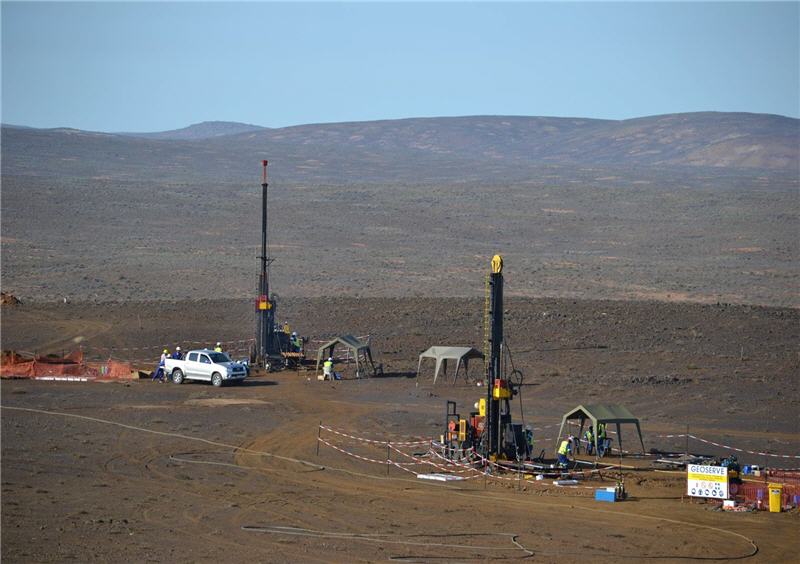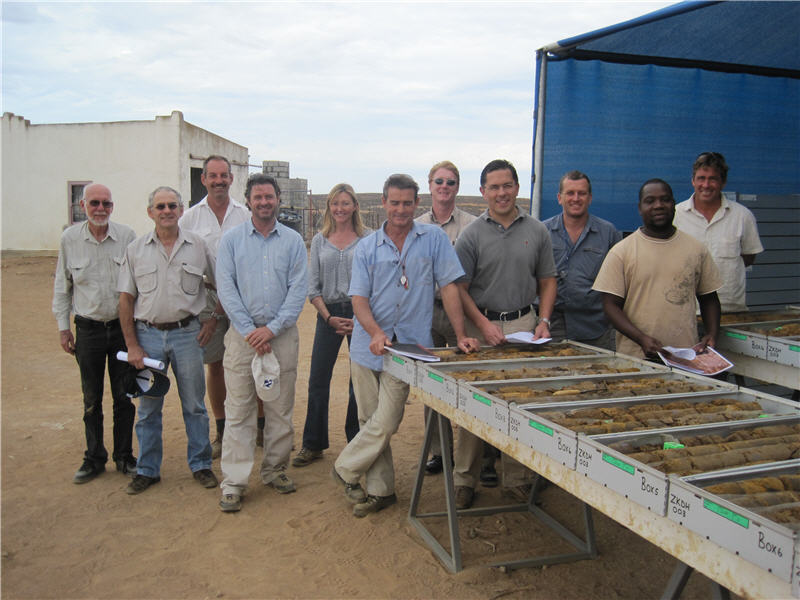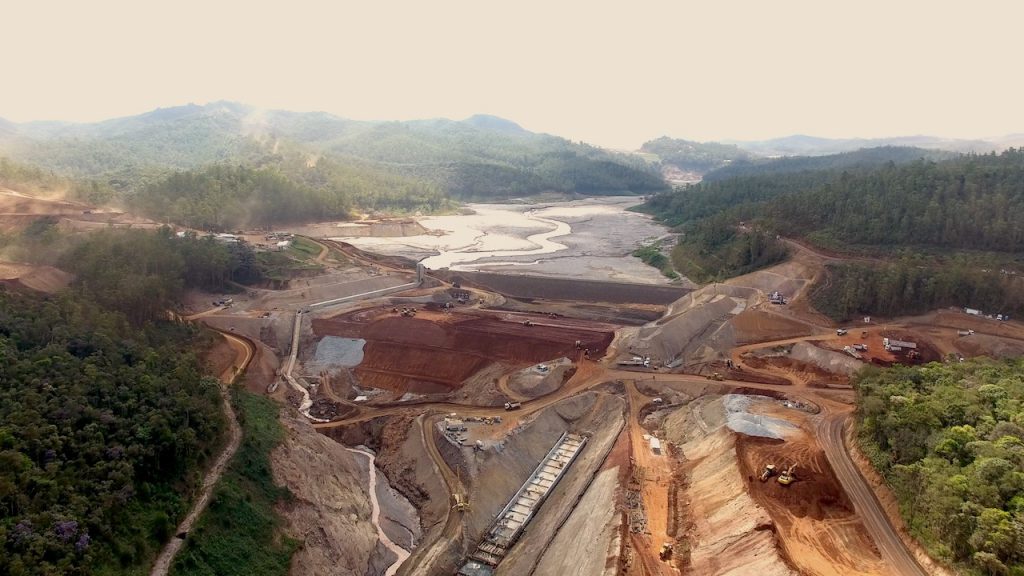Frontier looking to take on Molycorp, Lynas as largest rare earth producer outside China
As China takes action to regulate its rare-earth sector, in a bid to control polluting mines and chronic overproduction, companies outside China are ramping up exploration and figuring out ways to mine and process the 17 elements known as rare earths. (REEs)
China is a central theme in the rare earth story because the Middle Kingdom supplies some 95% of the world’s REEs, which are increasingly in demand for high-tech applications. Rare earths are found in smart phones, electric cars, flat screen TVs, permanent magnets, and guidance missiles, to name just a few uses.
Up to a few years ago, Chinese mines were cranking out rare earths – both common light rare earths (“lights”) and the rarer, higher-demand heavy rare earths (“heavies”) at a high rate, but in recent years, the Chinese have pulled back production and imposed restrictions on exports, for two main reasons. The first is environmental. Separating rare earths from the host rock to make rare earth oxide produces radioactive waste, and Chinese mines have up to now been notoriously polluting. The second is economic. China is running out of rare earth minerals and wants to protect its domestic rare earth industry and the supply pipeline to the manufacturing sector that relies on the minerals. The result, some say the fear, is a predicted worldwide shortage of rare earth elements.
 For these reasons, and especially as Chinese export restrictions began to effect world supply of rare earths and raise their prices (low REE prices due to Chinese oversupply had made most rare earth deposits uneconomic) non-Chinese companies began stepping into the breach. US-based Molycorp recently restarted its Mountain Pass mine in California with a plan to produce 40,000 tonnes of rare earth oxides per annum. Australian miner Lynas would mine rare earths at its Mount Weld mine in Australia and ship them to Malaysia for processing, at an initial rate of 11,000 tonnes per annum, ramping up to 22,000 tpa in a second phase.
For these reasons, and especially as Chinese export restrictions began to effect world supply of rare earths and raise their prices (low REE prices due to Chinese oversupply had made most rare earth deposits uneconomic) non-Chinese companies began stepping into the breach. US-based Molycorp recently restarted its Mountain Pass mine in California with a plan to produce 40,000 tonnes of rare earth oxides per annum. Australian miner Lynas would mine rare earths at its Mount Weld mine in Australia and ship them to Malaysia for processing, at an initial rate of 11,000 tonnes per annum, ramping up to 22,000 tpa in a second phase.
While Molycorp and Lynas are a good start, they are not enough to supply the world demand for rare earths, which last year amounted to around 110,000 tonnes. Other companies will need to develop mines, and an interesting factor in the mix is Frontier Rare Earths.
Headed by Irishman James Kenny, a former investment banker with degrees from University College, Dublin, Frontier’s Zandkopsdrift deposit in South Africa is sprinkled, like all REE deposits, with heavy and light rare earth oxides. But what makes the deposit a standout among its peers, notes Kenny, is its distribution of critical REOs, or as Kenny likes to refer to them, “the big 5” elements: praseodymium, neodymium, europium, terbium and dysprosium. These elements are critical because they tend to be rarer, in higher demand, and therefore command a higher price:
“With these big 5 elements we have total distribution of 7.8%. Compare that to Molycorp, their equivalent is 0.5%, so there is a high distribution of valued and scarce lights and heavies,” says CEO Kenny. He also notes that the mine would be the largest producer of separated, heavy rare earth oxides outside China.
Frontier’s recently released preliminary economic assessment shows the deposit hosting close to a million (950,000) tonnes of total rare earth oxides (TREOs). The PEA states the project would produce 20,000 tonnes of separated REOs per annum, generating annual revenues of $1.1 billion, for a 20-year minelife. Capital costs are pegged at $910 million for a 1-million-tonne per annum open-pit mine and separation plant.
Kenny points out that Frontier is the only rare earths company so far to do a deal with a strategic partner, in this case the government of Korea.
Announced last December, the joint venture with Korea Resources Corporation (KORES) sets out certain milestone for KORES to acquire up to a 30% interest in the deposit, in exchange for 31% of the mine’s production. The JV is also a “deal within a deal”, since it invites some of Korea’s largest industrial giants, such as Samsung, Hyundai and Daewoo Shipbuilding & Marine Engineering Group, to form a consortium that would purchase rare earth oxides for industrial end uses.
One of the most challenging aspects of building a rare earth mine is separating the rare earth metal ore once it’s pulled out of the ground. Rare earth guru Jack Lifton said in a 2011 interview with Reuters that 96% of non-Chinese rare earth companies will fail because most companies do not have the separation capacity, which is “99% controlled” by China.
Asked about the separation dilemma, Kenny said nearly all, 97%, of Frontier’s rare earths are found within monazite carbonatite, a reddish-brown phosphate mineral. Monazite can be “cracked” using sulphuric acid, a process Kenny says has been around for decades. “If you have an unconventional mineral, you’re doing R&D in a lab; for some people it’s complex, for us it’s much more straightforward,” he said.
Carolyn Dennis, in a recent interview with The Critical Metals Report, confirmed the promise of monazite as a commercially-viable source rock for processing heavy rare earths, especially “given the metallurgical issues with a number of the minerals that haven’t been commercially developed like eudialyte.” Commenting on Frontier’s processing capacity, Dennis said “Frontier has a flow sheet, but it needs to work through the pilot plant.” She also noted the JV with KORES could give Frontier a competitive advantage: “Having a partner providing an end market, and that potentially is going to help provide financing, is definitely solving part of the equation to create a viable rare earth company.”
What will the market for rare earths look like in future, considering the prices of most light and heavy rare oxides have taken a precipitous drop over the past year? Kenny acknowledged prices “have gone parabolic”, but thinks by 2015, the year Frontier plans to go into production, the pricing environment will look better. He cites growing world demand for rare earth elements and reduced production coming out of China as key reasons. Kenny predicts oversupply, ergo falling prices for lanthanum, used in hybrid vehicles, and cerium, used to polish TV screens. The “big 5” critical REOs will enjoy higher prices while the others will flatline, forecasts Kenny.
As for the role of China versus new entrants to the rare earths space, Kenny said demand for the high-tech minerals is going to keep growing at a rate where 6 to 8 new producers will be required to keep pace. With the magnet sector growing at 7-10% per annum, he predicts 20,000 tonnes of new demand by 2016-17, each year, which is equivalent to the annual production of a Lynas, Frontier or half of Molycorp.
“The squeeze is not next year. I think the squeeze comes between 2015 and 2020,” Kenny said. “If companies like us don’t get into production, it’s going to get very, very tight.”
{{ commodity.name }}
{{ post.title }}
{{ post.date }}

Comments
Soton2D
The stats quoted here are a load of crap with Lynas ready and capable NOW of producing 20% of the worlds rare earth minerals.